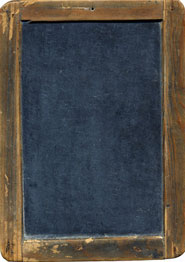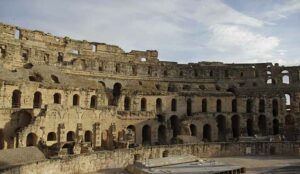Recent archaeological evidence has recently been uncovered that shows that modern contact centres can learn a lesson or two from Roman times.
Professor Applebius explains that there is a bigger connection than you would think.
Introduction
There is an old adage that states “the more things change, the more they stay the same” and, in relation to our understanding of the Classical world and its legacy with respect to modern-day life, we can begin to see parallels: some things, such as human nature, do not change.
You can see signs from the first credit crunch in the writing of the Roman poet and writer Juvenal…
“…cedamus patria. vivant Artorius istic et Catulus, maneant qui nigrum in candida vertunt, quis facile est aedem conducere flumina portus, siccandam eluviem, portandum ad busta cadaver, et praebere caput domina venale sub hasta. quondam hi cornicines et municipalis harenae perpetui comites notaeque per oppida buccae munera nunc edunt et, verso pollice vulgus quem iubet, occidunt populariter; unde reversi conducunt foricas, et cur non omnia, cum sine…”
Translates into…
“…So, farewell Rome, Artorius and Catulus, I leave you to sanitary engineers and municipal architects, fellows who by swearing black is white find it easy to land contracts for a new temple, swamp drainage, harbour works, river clearance, undertaking the lot – then pocket the profits and fraudulently file their petition for bankruptcy at the hands of their money lenders…”
Juvenal, Satire III
New Discoveries
In the year AD 79, Mount Vesuvius erupted, destroying Pompeii and leaving us a wealth of preserved materials and records, giving a new insight to the bureaucracy and management practices of the day.
From recently excavated public buildings we have gained a hitherto unknown and intriguing glimpse of the day-to-day life of a Roman public servant.
We like to think that management evolves over time, new tools and techniques replacing the old, new styles and practices of leadership subsuming the old. However, as we shall see, these ‘new’ techniques may not be!
Out With the Old, in with the New
In the Roman ‘government’ the majority of what today could be considered ‘senior’ management was drawn from the elite Equestrian and Senatorial classes, working their way up through the various offices, the Cursus Honorum, with the eventual aim of achieving the Consulship.
Conversely, the common clerk or secretary was more likely to be either a slave or low-born freeman. Accordingly, this led to a much greater divide between worker and manager, the divide getting greater when we start looking at the pressures put on them.
Senior Managers in Position for One Year
Given that the standard length of service in a magisterial position was one year, it can be seen that anyone looking for the top job and eventually holding one of the two Consulships had their work cut out to make a name for themselves, in each office, in a very short space of time.
The knock-on effect of this was a ‘manager’s’ ambition and progress being dependant on his staff.
Pressure on Staff
So, as today, targets… The people’s assemblies, making each promotion dependant on one’s ability for self-promotion, governed election to the various offices.
In each case, as today, pre-election promises made to the electorate defined their year in each office, the difference being that they had to deliver on those promises to stand any chance of taking the next step. This, of course, piled pressure upon the staff from both the management and customers.
Target Setting was Commonplace
Given the high proportion of slaves within the bureaucratic establishment, you would think that their lives could not get much worse.
However, these dual pressures from above and outside led to major problems for the workers. Targets were cripplingly tight and, at the same time, in retrospect, surprisingly modern!
New Discoveries

Slate found at Pompeii
Outside the civic hall at the Forum in Pompeii, several items were excavated that, at first, did not make much sense.
A length of brass rail, the remnants of an hourglass and several slates. It was only when seen in conjunction with evidence from elsewhere that these combined to show a picture of the first-known example of service-level targets.
Adherence Management
Found outside a ‘public reader’s’ office, these artefacts allowed a citizen or slave to call a reader, then time how long they took to arrive, an inscription on the wall showing how long the magistrate allowed them to respond for each particular building and task.
The slates were provided by the magistrate for the customer to name any worker or slave who missed these targets! Multiple transgressions would then lead to disciplinary action.
Today anyone who thinks of the phrase ‘disciplinary action’ tends to think of the normal verbal/written warning path. Unfortunately, this was different for your Roman civil servant/slave.
Disciplinary action could mean anything from loss of earnings, through beatings of varying severity right through, in the worst case, to a visit to the Coliseum.
There is frequent reference to slaves falling short of targets being sent to fight (and die) at the public spectacle.
Forget your day-to-day quality management process, the adherence to targets was part of the magistrate’s promise, and any failure to meet them seen as unforgivable.
Penalties for Non-Performance
Records show that pre-election in AD 54 Iocus Fossor and Bardus Fabula between them sent over one hundred workers to either the slave auctions or Coliseum, depending on how far out from their service levels they were.
Other transgressions included failing to greet the manager correctly, illegible handwriting on official documents, seal wax dropped on documents and the ultimate sin of Vos es lectio purgamentum.
So anyone who thinks they have a strict manager today should think again.
Adapted from: Roman Society and Bureaucracy.
Professor Assoluto Rifiuti. University of Assurdità
This news story was first published on the 1st April 2010
Author: Jo Robinson
Published On: 1st Apr 2010 - Last modified: 26th Feb 2025
Read more about - Expert Insights
















Their IVR systems were pretty brutal as well – it was just a guy standing in front of everyone getting yelled at (The Routeus). He had to respond back to everyone in real time, and then point them to the right agent. If customers were routed to the wrong service agent, they were allowed to stab the Routeus in the face with a pilum (a type of short spear), so long as it had no metal point. You could tell a good Routeus by the number of eyes they had remaining – this lead to the phrase “Better than a sharp stick in the eye.”
In the end, the Roman Empire collapsed due to the comitia curiata’s purist rejection of Athenian incentivisation, regarded variously as “too enlightened” and “bribery”, both alien to the Roman traditions of self and third party sacrifice, hence “timeo Danaos et dona ferentes”.